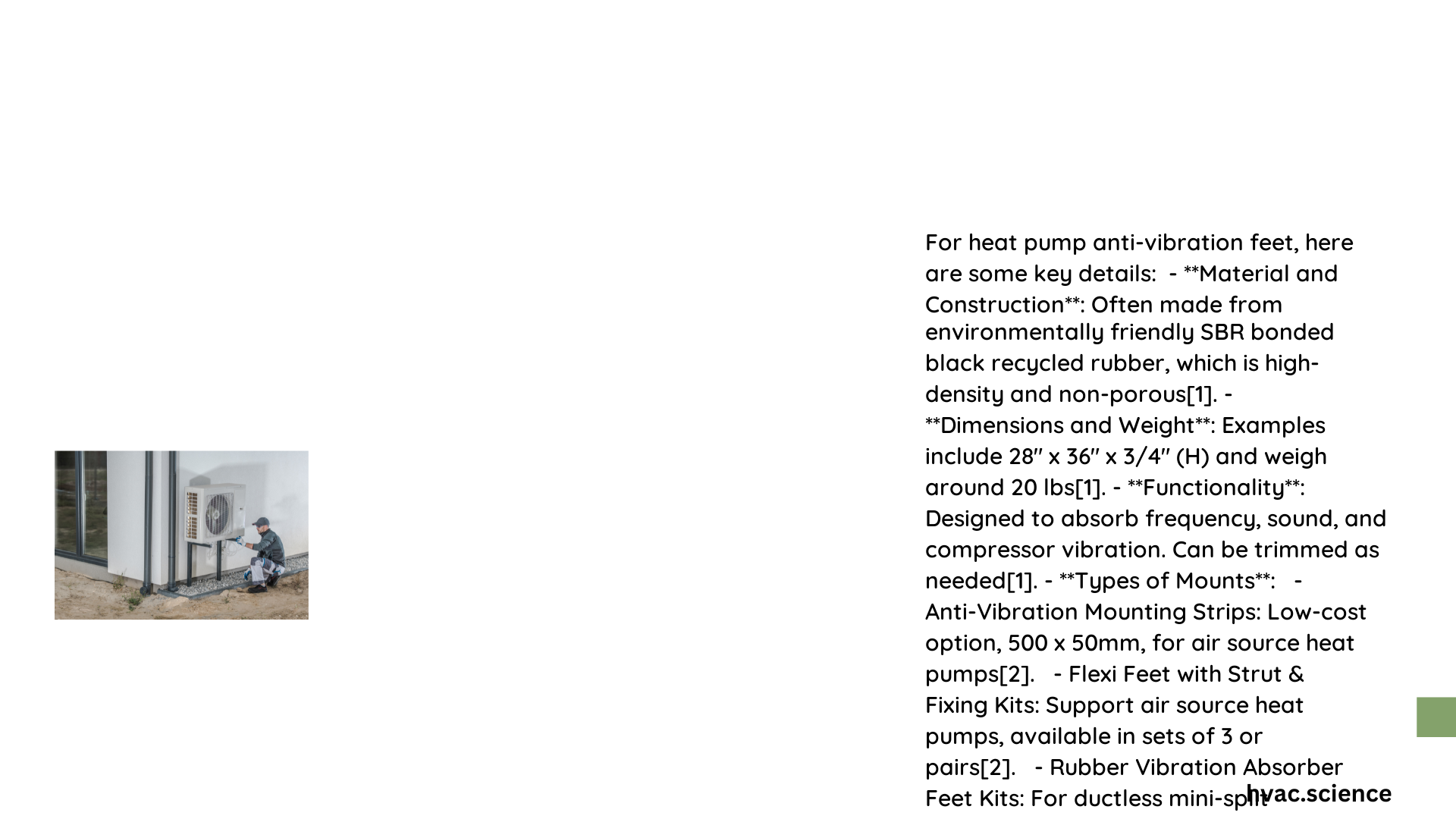Heat pump anti vibration feet are specialized support components designed to minimize mechanical vibrations, reduce noise transmission, and enhance the overall stability of heat pump systems. These innovative accessories absorb operational vibrations, prevent structural damage, and ensure smoother, quieter heat pump performance across residential and commercial installations.
What Are Heat Pump Anti Vibration Feet?
Heat pump anti vibration feet are engineered support mechanisms that isolate mechanical equipment from direct contact with mounting surfaces. These specialized components serve multiple critical functions:
- Vibration Absorption: Reduce mechanical oscillations
- Noise Mitigation: Minimize sound transmission
- Equipment Protection: Prevent structural stress and potential damage
What Materials Compose Anti Vibration Feet?
Anti vibration feet typically utilize robust materials engineered for durability and performance:
| Material Type | Characteristics | Performance Benefits |
|---|---|---|
| Natural Rubber | High elasticity | Excellent shock absorption |
| Synthetic Rubber | Chemical resistance | Consistent performance |
| Neoprene | Weather-resistant | Outdoor application suitability |
| Polyurethane | High load capacity | Precise vibration control |
How Do Anti Vibration Feet Work?
The operational mechanism of heat pump anti vibration feet involves strategic energy dissipation:
- Mechanical Isolation: Interrupt direct contact between equipment and mounting surface
- Shock Absorption: Convert kinetic energy into minimal heat
- Dampening: Reduce amplitude of mechanical vibrations
What Load Capacities Can Anti Vibration Feet Handle?
Load-bearing capacities vary significantly based on design and material:
- Lightweight Systems: 100-500 kg capacity
- Medium-Scale Installations: 500-1000 kg capacity
- Heavy-Duty Applications: 1000-1500 kg capacity
What Factors Influence Anti Vibration Feet Selection?
Critical selection considerations include:
- Equipment weight
- Operational frequency
- Environmental conditions
- Mounting surface characteristics
- Noise reduction requirements
How to Install Heat Pump Anti Vibration Feet?
Installation best practices involve:
- Surface Preparation: Clean and level mounting area
- Precise Positioning: Center anti vibration feet under equipment
- Secure Attachment: Use recommended fastening techniques
- Level Adjustment: Ensure horizontal alignment
What Performance Metrics Matter?
Key performance indicators include:
- Vibration reduction percentage
- Noise decibel attenuation
- Durability under continuous load
- Temperature resistance range
What Maintenance Strategies Enhance Longevity?
Recommended maintenance approaches:
- Regular visual inspection
- Annual compression testing
- Replace every 3-5 years
- Monitor for material degradation
Conclusion

Heat pump anti vibration feet represent a critical technological solution for managing mechanical energy transmission, ensuring optimal system performance and longevity.
